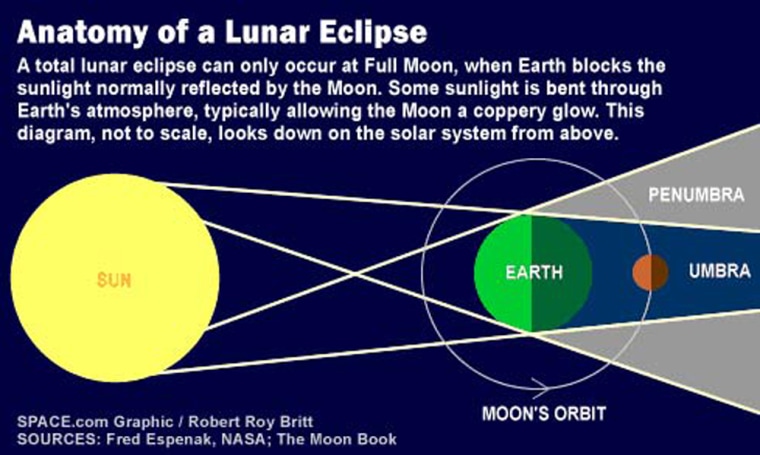On Aug. 28, skywatchers across much of North America can watch as the Moon crosses into the Earth's shadow and will undergo its second total eclipse in 2007.
West Coast viewers will get the best show.
Lunar eclipses occur when Earth gets between the sun and the moon, casting a shadow. The view is different from each location on the planet. Along the West Coast of Canada and the United States and in Alaska, the entire eclipse will be visible from start to finish before moonset in the early morning hours of that Tuesday. Hawaiians will see totality – when the moon is completely in Earth's shadow – high in their sky around midnight.
In eastern Asia and Australia, the event will occur on the same date but in the evening, since for this part of the world it will coincide with moonrise.
What will happen
The Moon will track across the southern portion of the Earth's shadow, and will be completely immersed for one-hour and 30 minutes, making this a much-longer than normal totality.
Because some of the sunlight that strikes our Earth is diffused and scattered by our atmosphere, its shadow is not completely dark; enough of this light reaches the Moon to give it an eerie coppery glow even when it's totally eclipsed. It is anticipated that during the upcoming total eclipse the Moon will glow brightest across its lower portion, while its upper part (closest to the center of the shadow) will appear a deep shade of brown or gray.
For easterners, the eclipse will begin around dawn and will still be in progress when the Sun rises and the Moon sets, two events that happen almost simultaneously on a lunar eclipse night.
For the Canadian Maritime Provinces the Moon sets before total eclipse begins; be on the watch for a thinning sliver of the Moon's edge going down just above the western horizon. Across the eastern United States and the Great Lakes States, the Moon sets during totality. In this region, depending on where you are located and just how clear your western sky is on eclipse morning, you might lose sight of the eclipsed Moon completely before it sets, since the twilight sky will still be quite bright and the full Moon will be shining 1/10,000 as bright as it normally would; otherwise, you'll be hunting for a dim ball.
Across the Nation's midsection, the Plains and Rocky Mountain States totality has already ended before moonset and the eclipse is partial as the moon emerges from the Earth's shadow.
The next total lunar eclipse is scheduled for Feb. 20-21, 2008 and will widely visible from North and South America, as well as Europe, Africa and eastern Asia.
